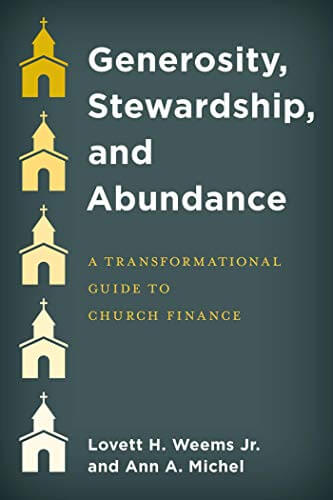John Wimberly dispels the myth that millennials aren’t willing to contribute to church. The problem is the church has not adapted to the 21st-century ways of soliciting and receiving donations that would encourage their generosity.
“Boomers at our church don’t understand how we give.” I hear this from young people around the country. In a striking example of how generations can see things in opposite ways, boomers often say, “Millennials don’t know how to give the way we do.” Let’s unpack these conflicting perceptions of millennial financial support for the congregations where they worship.
First, though, a reality check: How much did we boomers give to congregations when we were in our twenties? How many of us were even involved in a congregation? As a twenty-something pastor, I saw precious few of my generation in the congregations I served. Most of the few who were involved were unable to give much financially due to the low wages they were earning early in their careers.
Second: Don’t tell Barack Obama or Bernie Sanders that millennials don’t contribute financially. Their campaigns raised hundreds of millions of dollars from millennials. Don’t tell millennials who contribute to GoFundMe campaigns for issues and individuals. Those causes know how to ask — too many congregations don’t. Millennials contribute to well-identified needs when they are asked to do so.
Giving in new ways
Millennials support causes that they value — environmental groups, LGBTQ advocates, political campaigns, etc. And they tell me they want to contribute what they can to the congregations they visit or join. But those congregations haven’t adapted to 21st-century giving patterns. They don’t offer younger people the opportunity to contribute using their preferred methods of payment.
When I was talking about this subject with a Colorado congregation, the young associate pastor said, “I have to agree. Last week, I visited a congregation and they gave me no opportunity to give. Like many in my generation, I carry no cash. So, when the offering plate went by, I felt excluded — it was like they didn’t want me to give. In contrast, another congregation I visited had a QR code in the bulletin that I could scan with my phone, and a text number where I could send a donation. I felt included and welcomed by that congregation.” One polling organization found that only 42 percent of millennials use checks (though they do have checking accounts for ATM purposes).
The issue isn’t the willingness of millennials to contribute financially. The issue is understanding how they contribute and what they like to contribute to. Millennials are driving the transformation of our purchases into a cashless economic system. And, by the way, it isn’t just millennials. Business Insider reports. “Although millennials are embracing the use of digital payments more than any other age group — 49 percent of millennials prefer digital payments to cash — they aren’t the only ones; 44 percent of Gen X respondents and 32 percent of baby boomers prefer digital payments to cash.” Congregations need to create options for millennials to support their faith communities using digital payments, even during the time of offerings in worship.
Asking in new ways
Starbucks makes it easy for young people to pay. They have a scanner at each checkout spot. A cashless millennial can pull out her or his phone and pay the bill. Political campaigns ask for a one-time $25 PayPal contribution (and a few weeks later, of course, they ask for another $25). A homeless feeding program asks millennials to contribute $5 per week to enable the homeless to have fresh fruit every morning. The list goes on. Congregations can and must learn from these examples how to create opportunities for millennials to support their ministries.
Encouraging millennials to contribute to a congregation’s ministry is not just a matter of technology. It’s also how we ask and what we ask for. Millennials like to support very specific, concrete projects that produce results. For my entire career, I opposed designated giving. I was taught in seminary that it undermined the ability of the governing council to determine how money is spent. We need to leave such thinking in the 20th century where it belongs. Millennials and many others today want to target their giving. Give them the chance to support a specific mission project and they may donate (especially if they receive an email or text inviting them to do so from their mobile device). Nonprofits raise tens of thousands of dollars for specific projects with a single email solicitation. Is it too much for the church to adopt similar fundraising strategies?
Old ways die hard
Some of my boomer peers have responded to these suggestions with, “Well, are you suggesting that we just abandon pledging? How will we create a budget without projected, pledged revenue?” Such either/or thinking is a huge obstacle to change in all aspects of a congregation’s life. In contrast, both/and thinking is the fertilizer for change.
Is there any reason why we can’t have pledges and targeted solicitations? Is there any reason why older generations can’t carry most of the financial load (as older generations have always done) with pledges and develop strategies for younger generations to give what they can to specific needs the congregation has identified? Can’t we let each of the five generations in the church today give in ways they are comfortable with? Can’t we have demographically crafted stewardship strategies, rather than a generic strategy for all?
The problem is not that millennials don’t contribute. The issue is that most congregations haven’t figured out how to encourage them to give. It’s time to figure it out!
This article appeared originally in Perspectives, the electronic newsletter of the Congregational Consulting Group. Used by permission.







